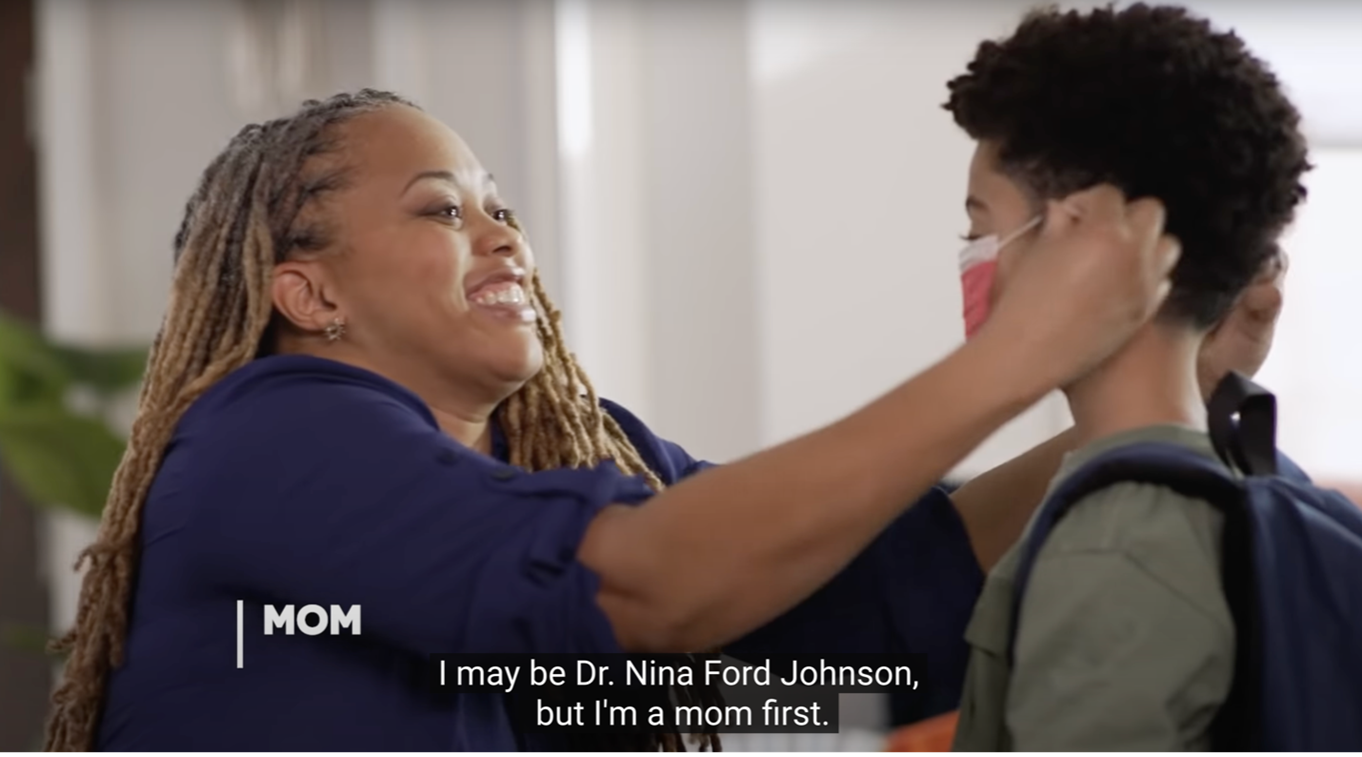All Public Health Campaigns Are (Not) Created Equal
“I’m a Mom First” is one video in a series created by the Federal COVID-19 Public Education Campaign ‘We Can Do This’. The series was informed by culturally tailored messaging to address vaccine hesitancy among African Americans. Credit: National Health Authority
We do not all consume information in the same way. Tailored communications tools are required when designing any public health campaign, according to public health communications expert Sean Upshaw, who is presenting at this year’s Whole Communities—Whole Health Research Showcase.
From the myriad media sources vying for our attention to the language and cadence we are accustomed to in various settings, the packaging by which information is delivered can often be just as important as the information itself.
Likewise, healthcare isn’t just about prescriptions and doctor’s visits. The health and well-being of any community begin at home and are influenced heavily by unique cultural norms. This is why public health campaigns must be tailored to different audiences.
Vaccine uptake during the COVID-19 pandemic was lower among African Americans than other groups in the United States. Sean Upshaw, assistant professor of Visual Information and Persuasion in Health Communication, wanted to know why.
“I look at what strategies and steps different groups take to navigate healthcare, what choices they’re likely to make, the role of lived experiences, how different groups make sense of information, and how they share it with others,” Upshaw said.
The Moody College of Communication professor is also a steering committee member in Whole Communities—Whole Health (WCWH): the UT Austin Grand Challenge focused on community-engaged family health and wellbeing research. By ensuring that members of the community involved are active participants in the research process, the aim is to change the traditional methodological framework for conducting research so that a study’s findings have more potential to positively impact participants quickly.
The interdisciplinary team – focused on children’s health – are developing technologies that support research strategies for underserved communities in a variety of areas. Public health campaigns are one such focus WCWH is addressing. Many communications campaigns in the public health sphere are developed in the hope the messaging reaches as many people as possible. And, although designed with the best of intentions, many are ultimately only effective in reaching certain sections of society.
Upshaw is primarily focused on exploring and explicating what/how/why underserved populations in the U.S. engage with health messages. He is delivering a lightning talk on factors affecting COVID vaccine uptake among African Americans at the WCWH Research Showcase at UT Austin this week.
“This includes everything from communication style preferences when seeking health-related information, as well as how the representation of an illness to a historically underserved group makes sense to them,” he said.
This was especially obvious during the COVID pandemic, where messaging designed to encourage coronavirus testing and subsequently vaccine uptake resonated with some groups but not others. “We need culturally tailored messaging for different groups in society,” Upshaw said. And, in the case of the pandemic, federal agencies were proactive in response to calls for such.
“The federal government used tailored response messages [see video example] for a COVID prevention and vaccine campaign that were relatively effective because they took into account cultural characteristics, identity, and affiliations or patterns of affiliation that are associated with a cultural group in order to appeal to them and their experiences concerning a collective problem.“
General marketing strategies cannot be used when the information being conveyed is a matter of life and death. Different strategies are required, particularly for underserved communities who need more context in terms of how significant a health risk might be but also will potentially be more conscious of who it is that’s bringing this information to them.
This means starting with tailored data based on demographics, the rate of disease or infirmity within a given community, and also what unique variables might be at play.
One such variable could be the extent to which religion is a factor in people's choices about their health.
“Religion and the role of the church are some of the most important influences, culturally speaking, for the African American community,” Upshaw said. “Historically marginalized or underserved communities tend to rely on their church as a support system and a source of validation for decision-making and interpretation of an illness or an infirmity.”
Upshaw took a qualitative content analysis approach using a secondary sample source that the Department of Health and Human Services – and other federal agencies – compiled two years ago for a survey on polio vaccine hesitancy. “Since they used an intergenerational sample of African Americans and discussed many topics relevant to the communities that my study is focused on, it was a perfect fit,” he said.
Some of the most common vaccine roadblocks for the African American community surveyed included medical mistrust, uncertainty, misinformation, and interpretation of meaning. “Given that a COVID vaccine came so quickly, there was a lot of doubt about its efficacy,” Upshaw said



